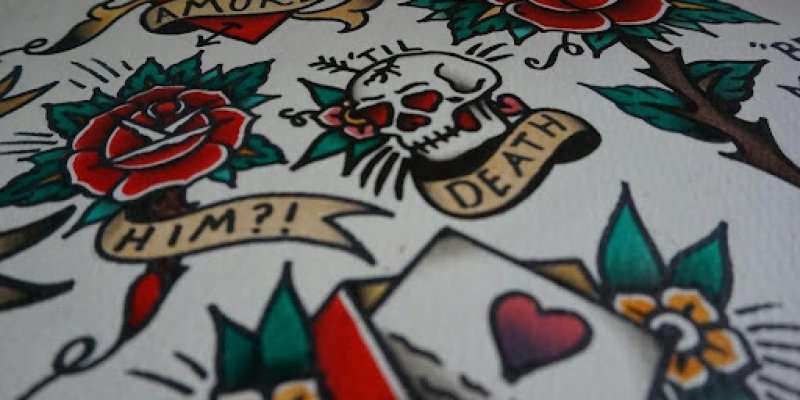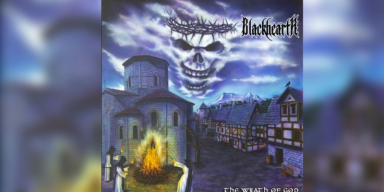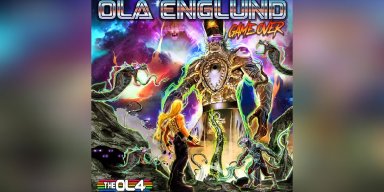
Image courtesy: Unsplash
The Evolution of Tattoo Design: From Traditional to Contemporary
Introduction
Welcome to the colorful and ever-evolving world of tattoo design! This artistic journey stretches from the traditional symbols and motifs cherished by our ancestors to the boundary-pushing contemporary designs that speak volumes of individuality in the modern era. As we delve into the various art styles that have influenced tattoo design worldwide, we'll also uncover the science and creativity behind the tattoo creation process. Get ready to explore the past, present, and future of ink on skin, and maybe find some tattoo ideas along the way!
Understanding Traditional Tattoo Design
Origins and Cultural Significance
Traditional tattoo design, with its deep roots in history, is more than just skin deep. Originating from various cultures around the world, each pattern and symbol holds a wealth of cultural significance and stories. For instance, Polynesian tattoos, known for their intricate geometrical patterns, often signify social status, tribe affiliation, and personal achievements. Similarly, tribal tattoos from native cultures in Africa, America, and Asia showcase motifs connected to religion, spirituality, and rites of passage. These tattoos served not only as personal adornments but also as powerful symbols of identity and belief systems.
Key Features and Themes
When diving into the key features and themes of traditional tattoo designs, one can't help but notice their distinct and bold characteristics. Traditional tattoos are known for their thick black outlines, solid blocks of color, and minimal shading. Common themes often include nautical symbols such as anchors and ships, animals like swallows and panthers, and heart or rose motifs representing love and beauty. This art style emphasizes simplicity and clarity, making the symbols instantly recognizable and deeply symbolic.
Evolution of Traditional Tattoo Design
Influence of Sailor Jerry and American Traditional Style
The evolution of traditional tattoo design notably accelerated with the influence of Norman Collins, better known as Sailor Jerry. Based in Hawaii during the mid-20th century, Sailor Jerry blended the bold lines and vivid colors of American traditional tattoos with motifs and aesthetics drawn from Asian art, thus pioneering a unique fusion style. He is credited with introducing innovations in tattoo ink colors and sterilization techniques. Sailor Jerry's iconic designs—eagles, beautiful women, and military motifs—reflected pride, patriotism, and the spirit of adventure, shaping the modern American traditional tattoo style and influencing countless artists and enthusiasts worldwide.
Incorporation of Japanese Traditional Style
The incorporation of Japanese traditional style into contemporary tattoo design further illustrates the dynamic evolution of this art form. Japanese tattoos, or Irezumi, are known for their full-body coverage, featuring intricate, multi-colored designs of mythological creatures, flowers, and scenes from popular stories. As Western artists began to merge these detailed compositions with the boldness of traditional American tattoos, a new aesthetic was born, characterized by extensive use of color, nuanced shading, and complex symbolism. This blending has led to innovative designs that honor the past while embracing the diversity and creativity of the present. Through this intricate synthesis, contemporary tattoo art has become a global phenomenon, reflecting an ever-expanding palette of styles and influences.
Introduction to Contemporary Tattoo Design
In the swirling world of ink and needles, the evolution of tattoo design has ushered us into the era of contemporary artistry. This movement marks a significant shift from time-honored methods to embrace the unconventional, blending the old with the new in exciting and innovative ways. Contemporary tattoo design is a testament to creativity's boundless nature, showcasing an array of styles that resonate with modern sensibilities and artistic freedom.
Rise of New Styles and Techniques
The heartbeat of contemporary tattoo design is its fearless experimentation and willingness to break the mold. New styles and techniques have emerged from artists pushing the boundaries, incorporating digital design tools, and drawing inspiration from a wide array of sources, including street art, abstract expressionism, and even pop culture. This renaissance has broadened the landscape, introducing tattoo enthusiasts to a world where almost anything is possible on the canvas of skin.
Fusion of Traditional and Modern Elements
At the heart of contemporary tattoo design lies a beautiful fusion between the traditional and the modern. Artists are revisiting old-school motifs—think nautical themes, bold lines, and classic symbols—reimagining them with a modern twist. This blend honors the rich history of tattooing while embracing the fluidity and diversity of current trends. This unique combination ensures that each piece is not just a work of art but a bridge between past and present.
Exploring Contemporary Tattoo Styles
As we dive deeper into the realm of contemporary tattoo design, we encounter distinct styles that have captivated both artists and enthusiasts alike. These styles are varied, each with its own charm and complexity, proving that contemporary tattooing is a vast and colorful spectrum.
Minimalist and Line Work Tattoos
Minimalist tattoos, characterized by their simplicity and clean lines, offer a subtle yet profound form of expression. This style often utilizes geometric shapes, sparse color, or simple black lines to create elegant and understated designs. Similarly, line work focuses on the precision and flow of lines, capable of creating intricate patterns or stark, impactful imagery with a minimalist approach.
Watercolor and Abstract Tattoos
Watercolor tattoos burst onto the scene with their vibrant colors and brushstroke effects, mimicking the look of a painting directly on the skin. These tattoos blend soft color transitions with splashes and drips, resulting in ethereal and dreamlike designs. Abstract tattoos take a different approach, playing with forms, shapes, and a collage of various elements to create pieces that can be open to interpretation, much like abstract art itself.
Realism and Portrait Tattoos
Realism in tattooing has reached new heights, with artists achieving incredible detail and lifelike accuracy. This style can encompass anything from nature scenes to intricate animal portraits. Portrait tattoos, a subset of realism, focus on replicating the exact likeness of people's faces, capturing not just their features but the emotion and essence of the subject. Both styles require a high level of skill and precision, showcasing the artists' extraordinary talent in bringing realism to the canvas of skin.
Innovation in Tattoo Design Technology

Image courtesy: Unsplash
The world of tattooing has witnessed remarkable advancements in technology that have significantly elevated the precision, efficiency, and possibilities in design. These innovations not only benefit the artists but also enhance the overall experience for those receiving tattoos, ushering in a new era of tattoo artistry.
Advances in Tattoo Machines and Ink
The heart of tattoo innovation lies in the development of modern tattoo machines and the formulation of advanced inks. Traditional coil machines have seen competition from quieter, more precise rotary machines, which offer smoother operation and less skin irritation. Additionally, ink technology has progressed, yielding a broader spectrum of colors and shades that are safer, more vibrant, and longer-lasting. This evolution allows for intricate designs and shades that were once thought impossible, enabling artists to push the boundaries of their creativity.
Impact of Digital Design Tools
Digital design tools have revolutionized the tattooing process by providing artists with the ability to create and modify designs with unprecedented precision. Software like Adobe Photoshop and digital drawing tablets allow for meticulous detail in the planning stage, enabling the customization of designs to the client's exact specifications. Moreover, these tools facilitate the visualization of designs on the body, helping both the artist and the client to make informed decisions about placement and size before the inking process begins.
The Science of Tattoo Design
Beneath the artistic exterior, tattooing is deeply rooted in science, from the composition and placement of tattoos to the principles of color theory that guide their creation. Understanding these aspects is crucial for both artists and enthusiasts.
Tattoo Composition and Placement
Composition and placement are key factors that influence the visual impact of a tattoo. The body's curves, muscles, and bone structure must be considered to ensure that the tattoo complements the wearer's natural form. Artists utilize knowledge of human anatomy to place tattoos in locations where they will maintain their integrity over time, considering factors like skin elasticity and potential future changes in body shape.
Understanding Color Theory in Tattoos
Color theory plays a pivotal role in tattoo design, affecting everything from the emotion conveyed by the piece to its visibility and longevity. Artists must understand the interaction of colors, including which combinations pop and which may fade over time. The choice of colors also needs to account for the client's skin tone, as this can dramatically affect the tattoo's appearance after healing.
Importance of Tattoo Aftercare
Aftercare is critical in preserving the beauty and integrity of a tattoo. The healing process involves science, as the body works to repair the skin and encapsulate the ink. Proper aftercare, guided by the artist, ensures that the tattoo heals correctly, minimizing the risk of infection and ensuring that the design remains crisp and vibrant. Recommendations typically include keeping the tattoo clean, moisturized, and protected from the sun, among other personalized advice based on the specific needs of the tattoo and skin type.
Conclusion
In the tapestry of tattoo art, every thread from traditional to contemporary design weaves a rich history and an evolving aesthetic. From the bold lines and symbolic motifs of traditional tattoos to the experimental and personalized approach of contemporary designs, tattoos remain a unique form of self-expression and artistry. Whether you're drawn to the time-honored classics or the modern, avant-garde styles, the world of tattoos offers endless possibilities to tell your own story, inked on the canvas of your skin.
The Evolution of Tattoo Design: From Traditional to Contemporary
Discover various tattoo art styles that influenced design worldwide, from traditional to contemporary. Unveil the science behind the creation process.
📚 Discover the fascinating world of tattoo design and its evolution over time! From traditional to contemporary, we explore the art styles that have shaped the world of tattoos. 💉🎨 Check out our latest blog post to get inspired with new tattoo ideas and stunning stock photos. 🌟📸 #TattooDesign #ArtStyle #TraditionalTattoo #ContemporaryTattoo #TattooIdeas #StockPhotos #BlogRead
Stock photos provided by Dreamstime.com
Reviews - Interviews - Promo - Radio Play
Contact zach@metaldevastationradio.com












